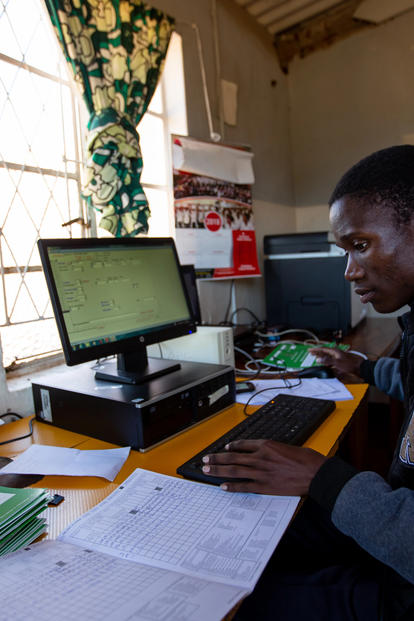
Monitoring, Reporting and Compliance
Additional Resources
Monitoring and Reporting
UNDP monitors and evaluates its overall performance against the objectives and requirements of the Social and Environmental Standards. Monitoring is integrated with UNDP's Quality Assurance reporting system and Risk Register.
The extent of monitoring activities is commensurate with the programme's or project's risks and impacts. UNDP requires that (i) the progress of implementation of mitigation/management plans required by the SES is monitored, (ii) complaints/grievances are tracked and monitored; (iii) follow-up on any identified corrective actions is tracked; and (iv) any required monitoring reports on SES implementation are finalized and disclosed.
Monitoring and reporting should include data disaggregated by categories of potential beneficiary and/or affected groups, and include specific gender indicators.
Where appropriate, monitoring shall engage and/or involve stakeholders and third parties, such as affected communities, independent experts, or NGOs, to complement or verify monitoring activities. The role of local governments should also be considered in monitoring activities.
Based on the monitoring results, any necessary corrective actions are undertaken. UNDP and stakeholders are to be promptly notified of any incident or accident related to the project activities that has had (or is likely to have) significant adverse impacts on people or the environment. Immediate measures are undertaken to address and remedy the incident or accident, and to prevent any recurrence.
Ongoing reporting to affected communities and individuals: For projects with potentially significant risks and impacts, periodic reports are provided to the affected communities that describe progress with implementation of project management and action plans and on issues that the consultation process or grievance mechanism has identified as a concern. Any material changes or additions to the mitigation measures or actions plans are communicated to affected communities. Reports are provided at a frequency proportionate to the concerns of affected communities but not less than annually.1
Monitoring activities involve direct participation of affected stakeholders, where possible, and in particular for projects with potentially significant adverse risks and impacts.
Monitoring activities should:
- Serve the purpose of learning for future improvement and be flexible and adaptable.
- Balance quantitative and qualitative assessment.
- Use participatory tools that include target group narratives, especially women's narratives, which are crucial.
- Track and assess reversals and capture negative impacts of a project.
- Assess contribution to change instead of attribution-based frameworks.
- Be tailored to timeframes to ensure realistic measurement and reporting.
- Be supplemented by a review by an independent third party whenever possible.
Compliance Review
UNDP’s compliance review process is intended to investigate alleged or potential violations of UNDP’s social and environmental commitments, including the SES, in the context of specific UNDP Programmes or Projects. Individuals or communities potentially affected by UNDP Programmes or Projects may submit complaints to the Social and Environmental Compliance Unit (SECU), an independent review body located in UNDP’s Office of Audit and Investigations (OAI). SECU evaluates whether UNDP has complied with its obligations, whether any non-compliance has caused harm to the complainant, and how UNDP can correct the non-compliance. UNDP’s Administrator will make the final determination of measures necessary to correct non-compliance.2
| Footnotes: |
|---|
(1) Without prejudice to any information sharing requirements under the Project-level Standards, including the free, prior, and informed consent requirement of Standard 6: Indigenous Peoples. (2) For more on UNDP’s Social and Environmental Compliance Unit, see: |
